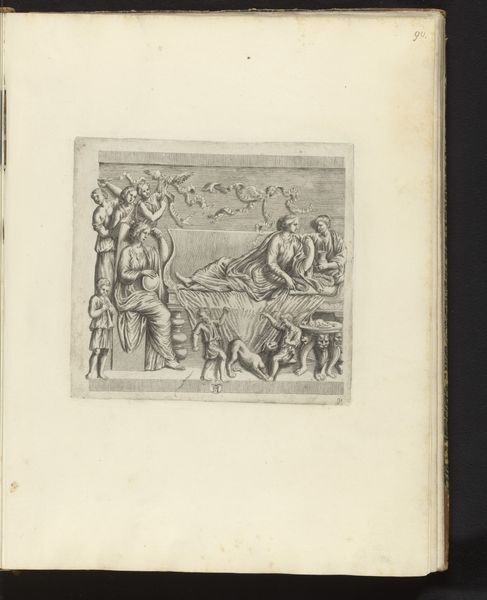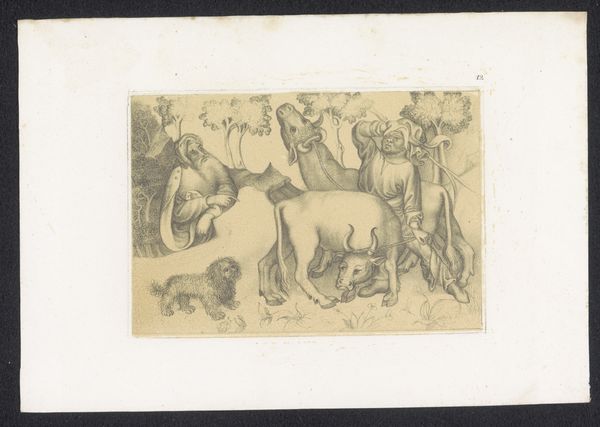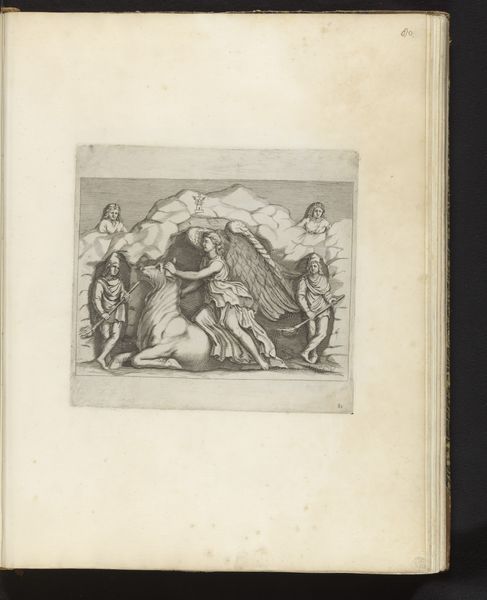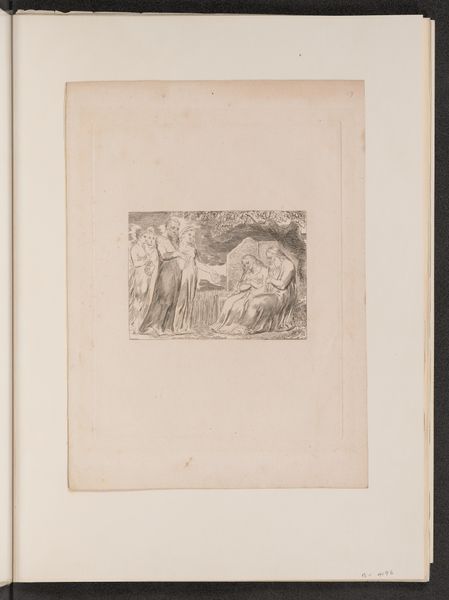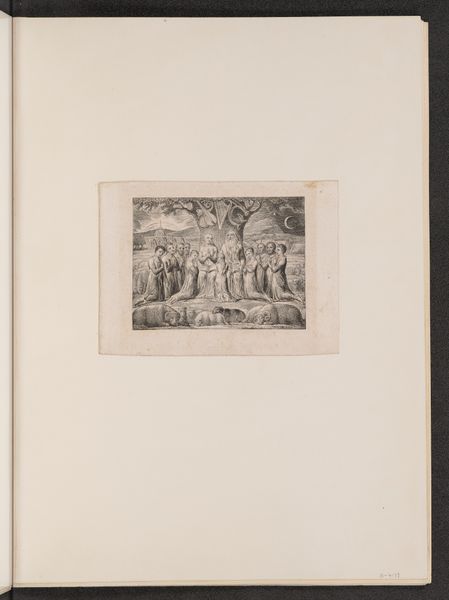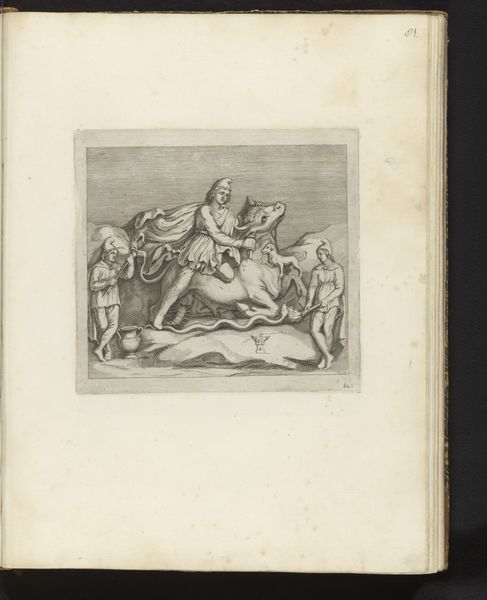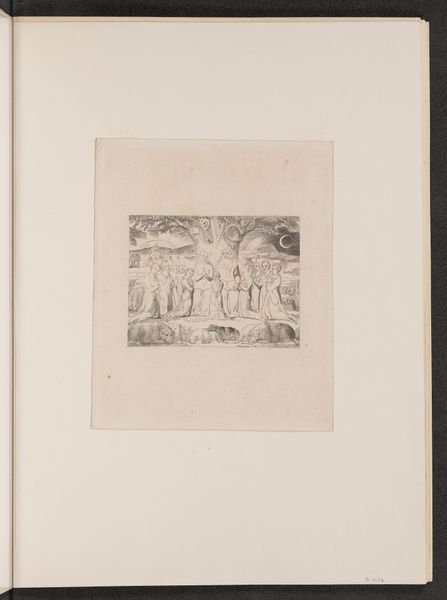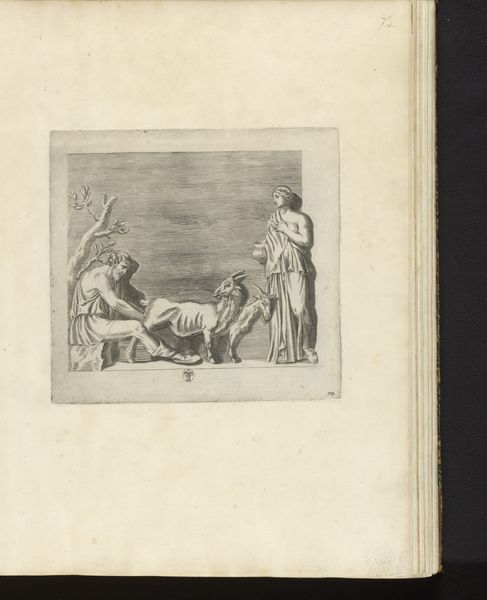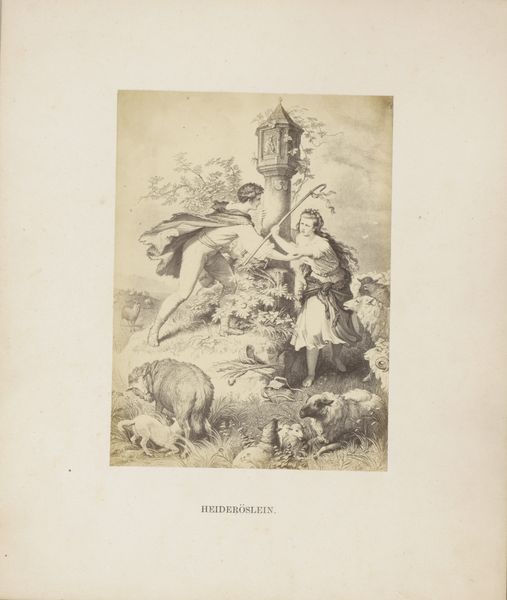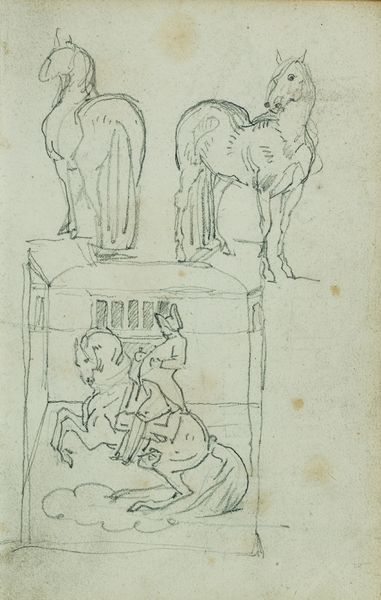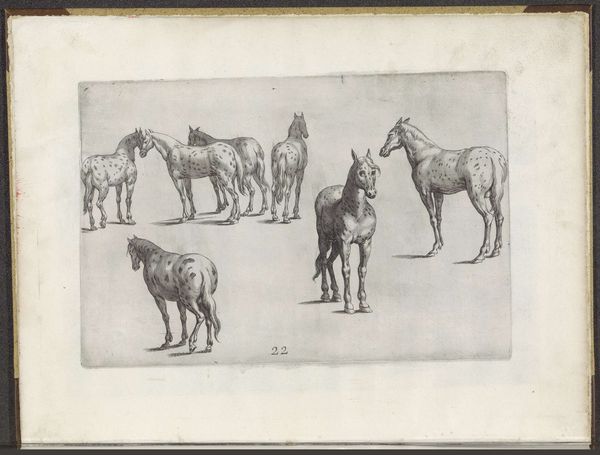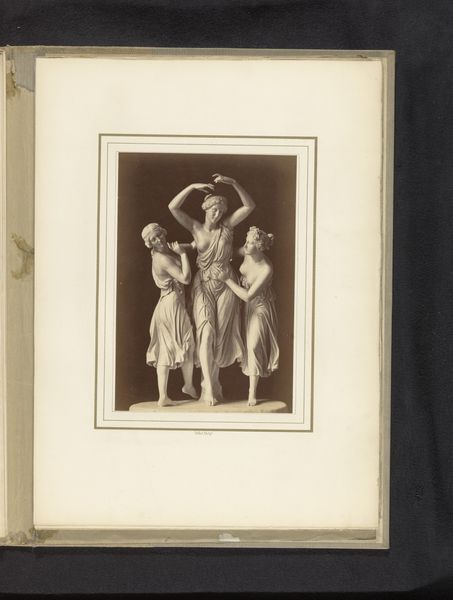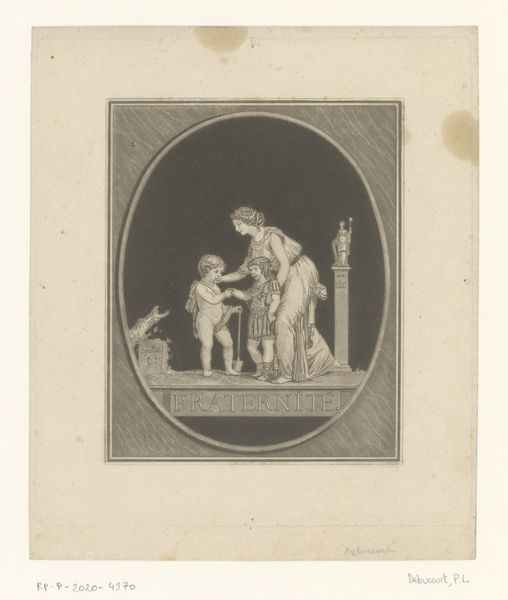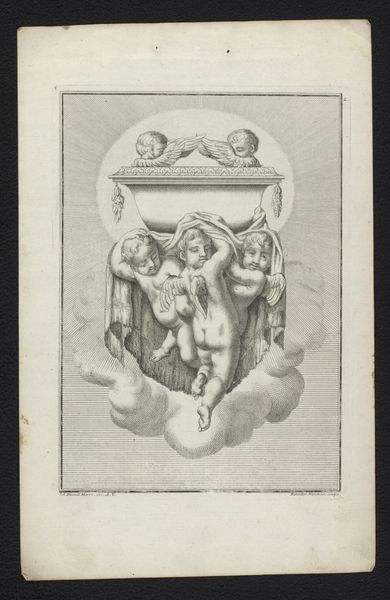
drawing, intaglio, pencil, engraving
#
portrait
#
drawing
#
intaglio
#
pencil sketch
#
figuration
#
11_renaissance
#
coloured pencil
#
pencil
#
history-painting
#
academic-art
#
italian-renaissance
#
engraving
Dimensions: height 375 mm, width 268 mm
Copyright: Rijks Museum: Open Domain
Editor: This is Nicolas Beatrizet's "Wolvin met Romulus en Remus," an intaglio drawing from 1552 held at the Rijksmuseum. There's a certain starkness to the image, especially the wolf's gauntness. How do you interpret this work in terms of its historical and cultural relevance? Curator: Well, let’s start with the obvious: Romulus and Remus, suckled by a she-wolf. It's the foundational myth of Rome, right? But why this particular depiction in the 16th century? Consider the political climate of Europe then. The rise of powerful city-states, constant power struggles, and a yearning for legitimate authority. Isn’t this image tapping into a desire for a glorious past, a validation of power through a legendary origin? Editor: I see what you mean. So, it's not just a retelling of a myth, but a statement about power and legitimacy in Beatrizet's time? Curator: Exactly! And let’s think about the wolf itself. Is it nurturing and maternal, or is there a sense of barely contained wildness? Beatrizet chooses to show a distinctly *thin* wolf, ribs visible, almost menacing. What does that suggest about the nature of power itself? Editor: So, the wolf embodies a kind of raw, maybe even ruthless, strength necessary to found an empire? Curator: Precisely! This image invites us to question not just the origin of power but its very essence. And consider the *gaze* of the wolf, straight ahead. What does it see? What is it guarding? Editor: It makes me rethink the traditional heroic narrative. It’s much more ambivalent. Curator: Absolutely! Beatrizet provides us a critical lens to view these narratives, understanding the role of foundational violence in the establishment of states, even empires. Does the legend then continue as justification for historical actions, even now? Editor: I hadn’t considered how charged this image is. Thank you. Curator: It's a reminder that even seemingly straightforward depictions of the past are always filtered through the present. Art serves as a prompt, encouraging dialogues that might shift perspectives as we actively participate.
Comments
No comments
Be the first to comment and join the conversation on the ultimate creative platform.
